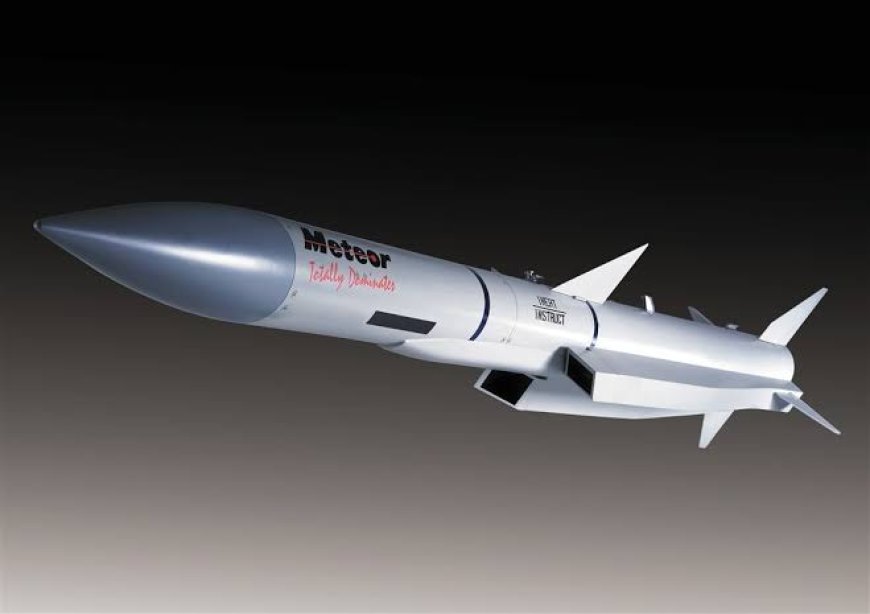HAL Confirms Meteor Missile Integration for Tejas Mk-1A Second Batch: Comprehensive Overview
HAL confirms Meteor missile integration for Tejas Mk-1A second batch, boosting India's air combat capability, operational readiness, and defense self-reliance

Hindustan Aeronautics Limited (HAL) has officially confirmed the integration of the Meteor missile with the Tejas Mk-1A fighter jets of the Indian Air Force's second production batch. This marks a significant milestone in India’s indigenous aerospace and defense capabilities, reinforcing the combat readiness of the Tejas fleet. The announcement has generated considerable attention across defense circles, as it promises to enhance the operational versatility and lethality of India’s light combat aircraft.
Background and Context
The Tejas Mk-1A is the advanced variant of the indigenous Light Combat Aircraft (LCA) designed and manufactured by HAL. While the first batch focused on delivering aircraft with core avionics, enhanced survivability, and weapons integration, the second batch aims to incorporate modern missile systems like the Meteor, which is a beyond-visual-range air-to-air missile developed by MBDA with cutting-edge radar guidance and propulsion technology.
Why HAL Integration Matters
The integration of the Meteor missile is strategically important for several reasons:
-
Enhanced Strike Capability: Meteor allows the Tejas Mk-1A to engage aerial threats at much longer ranges compared to conventional missiles, giving Indian pilots a tactical advantage.
-
Network-Centric Warfare Ready: With Meteor integration, Tejas Mk-1A becomes compatible with modern network-centric operations, allowing real-time data sharing between aircraft and command centers.
-
Boost to Indigenous Manufacturing: HAL’s successful integration highlights India’s growing self-reliance in defense technology, reducing dependency on foreign imports for critical combat systems.
-
Operational Readiness: By equipping the second batch of Tejas Mk-1A with Meteor missiles, the Indian Air Force strengthens its preparedness against potential aerial threats in high-intensity conflict scenarios.
Key Features and Facts
-
Missile Range: Meteor missiles have a range exceeding 100 km with active radar guidance, allowing Tejas to neutralize threats before they approach critical airspace.
-
High-Speed Engagement: Capable of speeds over Mach 4, the Meteor ensures rapid interception of fast-moving targets.
-
Integration Complexity: HAL has successfully adapted the missile’s avionics and control software to Tejas Mk-1A’s systems, ensuring seamless operation.
Drawbacks and Considerations
While the integration is a milestone, there are factors to consider:
-
High Costs: Equipping Tejas Mk-1A jets with Meteor missiles increases the per-unit cost of the aircraft.
-
Maintenance and Training: Pilots and ground crews require specialized training for handling, launching, and maintaining advanced missile systems.
-
Limited Numbers: Only the second batch receives the Meteor initially, so operational coverage across the entire fleet will be gradual.
Latest Updates and Significance
The integration aligns with India’s broader defense modernization goals, including the Atmanirbhar Bharat initiative. It strengthens aerial defense in strategically sensitive regions and complements other modernization programs in the Indian Air Force. Defense analysts highlight that such enhancements not only improve combat capability but also act as a deterrent in the region.
Conclusion
The Meteor missile integration into Tejas Mk-1A’s second batch by HAL represents a major leap in India’s indigenous defense capabilities. While it comes with challenges in costs and training, the operational and strategic advantages far outweigh the drawbacks. With this upgrade, the Tejas Mk-1A fleet becomes a formidable asset, enhancing India’s aerial strike power, ensuring better security, and reinforcing its path toward self-reliance in defense technologies.
This development positions the Tejas Mk-1A as a cutting-edge, multi-role combat platform capable of addressing both current and future aerial threats effectively.

 Ellofacts
Ellofacts 





